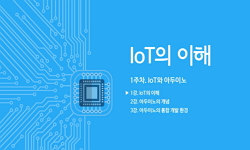These rising adoption of Internet of Things (IoT) devices in various applications have placed significant demands on cellular networks, including LTE/5G because they have to provide not only the regular services for human traffic but also meet the tra...
http://chineseinput.net/에서 pinyin(병음)방식으로 중국어를 변환할 수 있습니다.
변환된 중국어를 복사하여 사용하시면 됩니다.
- 中文 을 입력하시려면 zhongwen을 입력하시고 space를누르시면됩니다.
- 北京 을 입력하시려면 beijing을 입력하시고 space를 누르시면 됩니다.
https://www.riss.kr/link?id=A109102975
-
저자
Alvi Maira (Department of Electrical Engineering, Khwaja Fareed University of Engineering and Information Technology, Rahim Yar Khan, Pakistan) ; Toor Waqas Tariq (Department of Electrical Engineering, University of Engineering and Technology Lahore, Narowal Campus, Narowal, Pakistan) ; Rehman Yawar (Department of Electronic Engineering, NED University of Engineering and Technology, Karachi, Pakistan) ; Javed Imran (Department of Electrical Engineering, University of Engineering and Technology Lahore, Narowal Campus, Narowal, Pakistan) ; Idrees Muhammad (Department of Computer Science and Engineering, University of Engineering and Technology Lahore, Narowal Campus, Narowal, Pakistan) ; Imtiaz Junaid (Department of Electrical Engineering, Bahria University, Islamabad, Pakistan) ; Assam Muhammad (Department of Software Engineering, University of Science and Technology, Bannu, Pakistan) ; Aziz Amira Syed A. (Department of Digital Media, Future University in Egypt, New Cairo, Egypt) ; Attia El-Awadi (Department of Industrial Engineering, Prince Sattam Bin Abdul Aziz University, Al Kharj, Saudi Arabia)
- 발행기관
- 학술지명
- 권호사항
-
발행연도
2023
-
작성언어
English
- 주제어
-
자료형태
학술저널
-
수록면
1-17(17쪽)
- DOI식별코드
- 제공처
-
0
상세조회 -
0
다운로드
부가정보
다국어 초록 (Multilingual Abstract)
These rising adoption of Internet of Things (IoT) devices in various applications have placed significant demands on cellular networks, including LTE/5G because they have to provide not only the regular services for human traffic but also meet the traffic requirements for these IoT devices. Multiple devices desire to use network resources at the same time during peak hours and overload conditions, generating collisions and reducing the network's effective throughput. The access class barring (ACB) method was offered as the best potential approach in the LTE communication network to overcome this problem. Our suggested approach improves the ACB scheme, by splitting the time of a random-access sensing frame into a number of mini-slots and computing the value of the effective ACB factor within each mini-slot. Simulation results obtained show significant improvement in the reduction of the number of collisions, thereby increasing the throughput of the network. The proposed algorithm shows better performance from conventional ACB algorithms in terms of total service time (TST) which is the time required by all IoT devices in the system to get success. In particular, our proposed algorithm shows 75% improvement in TST, and the simulation results support our claim.
동일학술지(권/호) 다른 논문
-
Supply Chain Management Using an Industrial Internet of Things Hyperledger Fabric Network
- 한국컴퓨터산업협회
- Rehan Muhammad
- 2023
-
Music Classification Scheme Based on EfficientNet-B3
- 한국컴퓨터산업협회
- Park Kyuwon
- 2023
-
TEPDA: A TTP-Free, Efficient, and Privacy-Preserving Framework with Data Authenticity
- 한국컴퓨터산업협회
- Chen Jiahui
- 2023
-
Effective Security Monitoring using Efficient SIEM Architecture
- 한국컴퓨터산업협회
- Sheeraz Muhammad
- 2023




 KCI
KCI






